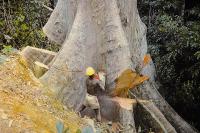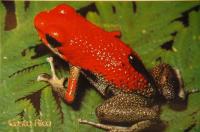Rainforest Residences and Rainforest Restoration
Illar Muul, PhD
President, Integrated Conservation Research, Inc.
Integrated Conservation Research (ICR) has the mission to conserve and restore tropical rainforests (
www.incores.org). Mostly we have done this through developing tourism attractions in tropical rainforests. This has worked well in many areas.
Our newest strategy is to use income from very low density real estate development to restore and reclaim rainforests. This may seem difficult to imagine. How can “development” conserve forests?
Every area in which we work has different problems and different potential solutions. Strategies need to be designed to meet local needs. Our demonstration project is very near Carara National Park in Costa Rica. It is also very near the Pacific Ocean (5km). The area has rolling hills and many natural attractions. Outside of Carara National Park are isolated patches of primary forest, mostly along rivers and streams. Most of the land is pastoral, with areas of tree plantations (mostly teak and melina).
Because of its natural beauty, this area located near Jaco and Orotina, is being developed for real estate, mostly condominiums. This high density development began with ocean front properties and is now ascending the hills for ocean views. Prices of agricultural land are increasing dramatically.
This “boom” in real estate sales would be difficult to stop. But, ICR’s strategy takes advantage of it. Agricultural activity over the decades has deforested the lands. However, because of remaining patches of original and secondary forests, wildlife abounds. High density real estate development will isolate these forest patches permanently and adversely affect the wildlife.
ICR’s model is planned to demonstrate to property owners that they can obtain good income from low density real estate development and reclamation of the forests on agricultural land. Additional income can be derived from a myriad of forest products harvested sustainably from the replanted forests. The increased greenery and wildlife will provide an added value to the low density real estate development.
Some people who buy properties in Costa Rica will realize that what they came to enjoy was the scenic beauty and wildlife. But, in high density development both will become obscured by the next phase of development that blocks the views and replaces remaining areas of beauty. Some wildlife can cope with this, but the unique, high diversity of native tropical species will begin to diminish.
ICR’s strategy is to restore native forests on these agricultural lands to increase species diversity. The ultimate goal is to reconnect the remaining isolated patches of forests to the original forests of Carara National Park (which is also an isolated forest) by “biological corridors” of reclaimed forests on the agricultural lands.
All isolated forests lose species over time. That is why establishing continuity in forest habitats is important in conserving species. Human habitations would have a lesser adverse affect on nature if they remain as ‘islands in a sea of contiguous forests.”
Large scale rainforest reclamation has not been attempted because of high investment costs and slow recovery of investment capital. ICR’s strategy greatly reduces costs by letting nature do most of the work. This approach is only possible adjacent or near original, high diversity forests which would be the source of species (gene bank) to be reintroduced. To attract seed dispersers from the original forest, fruit trees and other food species will be planted to serve as a “matrix forest.” The seeds from the original forests will be “broadcast” by the visiting birds and mammals.
The secondary benefit of the “matrix forest” will be income from sustainable harvest of many types of economic species. These would include species used for food, fiber, latexes, oils, building materials, medicines, horticulture, decoration, pet industry, etc. Income would be produced beginning the first year, increasing as the diversity of species grows. Captive breeding projects of rare and endangered species serve also as a tourist attraction.
But, most important to the property owners of “rainforest residences” will be the “value-added” benefits of abundant and diverse wildlife and vegetation; their own “garden of Eden.” This is why they sought a tropical destination: 12 months of summer and being surrounded by highly diverse natural beauty.
We invite you to come and see for yourself. Please contact Illar or Jing Muul by email: ; ; or by phone: 1 301 371 8988 for a customized tour of Costa Rica.


